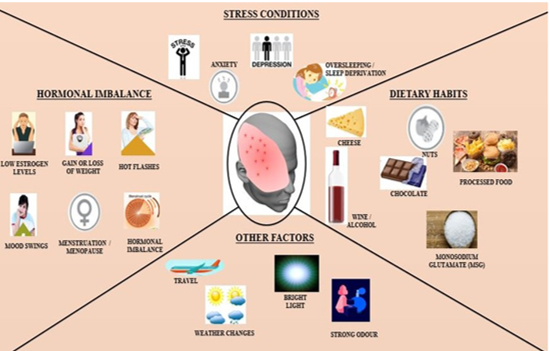Abstract
The reviewing of a migraine mainly aimed to analyze the incessant paroxysmal neurological ailment characterized by moderate to severe head throbbing. The review points out the basic pathophysiology and different types of migraine as well as some of the promising newer antimigraine therapeutic options. The various biomarkers in CSF, as well as blood, are used as standards to diagnose the condition. The triptans released during the 1990s were the initial class of drugs used for acute treatment of migraine. The other conventional therapies offer especially as oral formulations are not exquisitely appropriate for migraineurs having severe nausea and vomiting with reduced gastric absorption. The unmet clinical needs were rapidly advanced, and development of novel drug delivery system ensured better kinetic and dynamic characteristics. The newer drug regimens were more based and targeted on the neurotransmitters directly in involved in the pathophysiology of migraine by utilizing exceptionally confined delivery systems. These include a breath activated the system, transdermal patch, oral inhalers where lower and safer doses of the drug were utilized. Such systems were having improved patient compliance and offered non- invasive route of drug administration that could be suitably substituted by oral medications. The disease disabled the quality of life of patients and also had an abundant effect in the daily activities especially for women. Thus the various nanotechnical approaches are used as novel treatment methods for better and enhanced profiling of drug molecules.
Full text article
Authors

This work is licensed under a Creative Commons Attribution-NonCommercial-NoDerivatives 4.0 International License.

